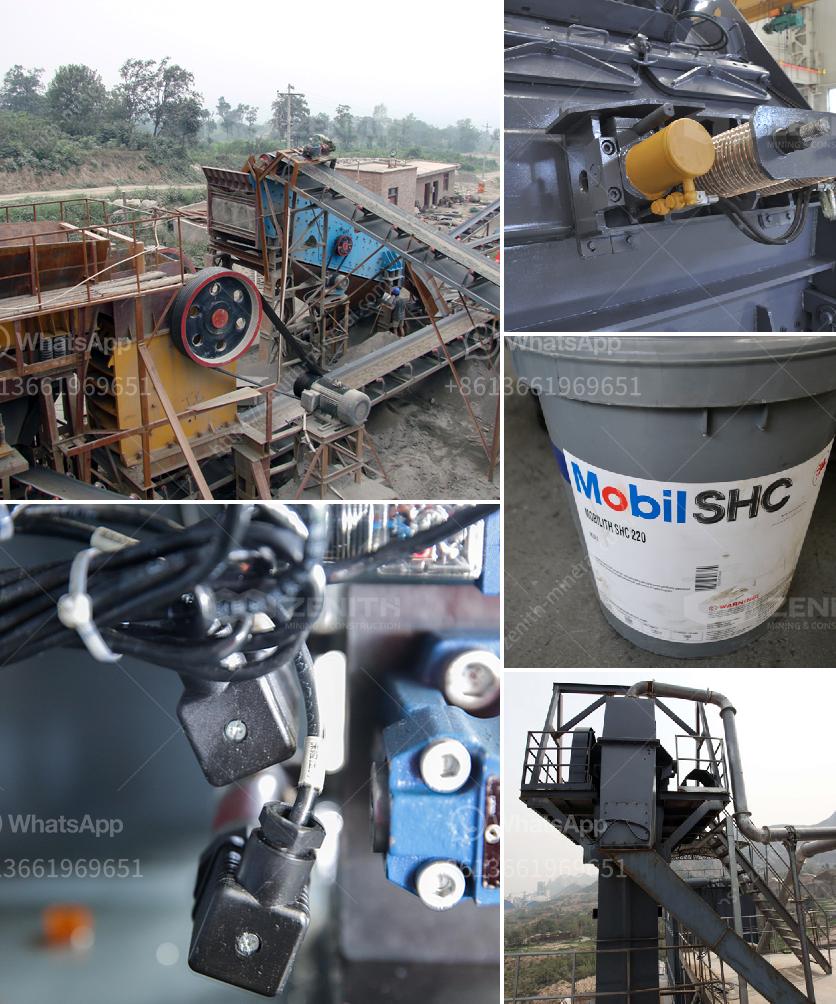When it comes to crushing rocks, the type of mill you should use depends on several factors, including the hardness of the rock, the desired size of the crushed material, and the specific application for which the crushed rock will be used. Here are some common types of mills used for crushing rocks:
-
Jaw Crusher:
- Description: A jaw crusher uses compressive force for breaking down large rocks into smaller pieces. It consists of two plates, one stationary and one movable, which form a V-shaped chamber where the rocks are crushed.
- Applications: Suitable for primary crushing of hard materials like granite, basalt, and other hard rocks. Often used in mining and construction industries.
-
Cone Crusher:
- Description: A cone crusher operates similarly to a gyratory crusher, but it has a less steep crushing chamber and more parallel zone between crushing zones. It uses a rotating piece of steel, the mantle, that crushes the rocks against a stationary piece of steel, the bowl.
- Applications: Ideal for secondary, tertiary, and quaternary crushing stages. It is used for medium to very hard materials.
-
Impact Crusher:
- Description: An impact crusher uses impact force to crush materials. It has a high-speed rotor with wear-resistant tips and a crushing chamber designed to throw the rock against.
- Applications: Suitable for softer materials like limestone and for recycling concrete. It is used in both primary and secondary crushing stages.
-
Hammer Mill:
- Description: A hammer mill consists of a rotating shaft with free-swinging hammers that crush the rock. The material is fed into the mill and is crushed by the impact of the hammers.
- Applications: Used for medium to soft materials. Commonly used in the production of aggregates and in the recycling industry.
-
Ball Mill:
- Description: A ball mill is a type of grinder used to grind and blend materials for use in mineral dressing processes. It operates on the principle of impact and attrition, where the grinding media (balls) in the rotating cylinder crush the material.
- Applications: Suitable for fine grinding of materials. Often used in the mining industry for ore processing.
-
Rod Mill:
- Description: Similar to a ball mill, but it uses long steel rods instead of balls as the grinding medium. The rods grind the ore by tumbling within the mill.
- Applications: Used for grinding ores, coal/coke, and other materials for both wet and dry applications.
-
Roll Crusher:
- Description: A roll crusher consists of two rotating cylinders that crush the material between them. The material is drawn into the gap between the rolls by their rotating motion.
- Applications: Suitable for medium to hard materials. Often used in the production of aggregates and in the mining industry.
-
Gyratory Crusher:
- Description: A gyratory crusher is similar to a jaw crusher, but it has a conical head and a concave surface. The rock is crushed between the central rotating cone and the stationary outer concave surface.
- Applications: Used for primary crushing of various hard materials. Commonly used in large-scale mining operations.
Each type of mill has its own advantages and is suitable for specific applications. The choice of mill will depend on the characteristics of the rock to be crushed, the desired size of the final product, and the specific requirements of the project.

